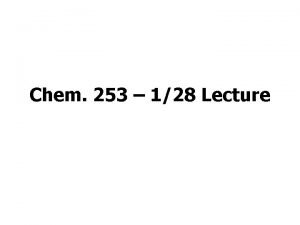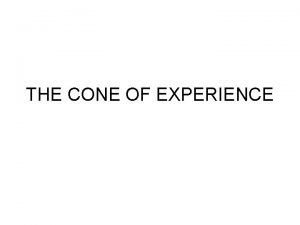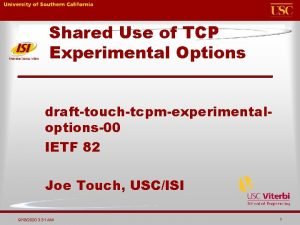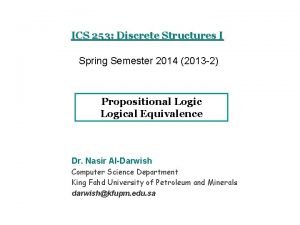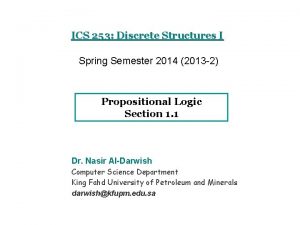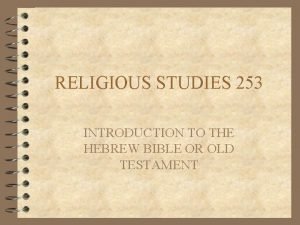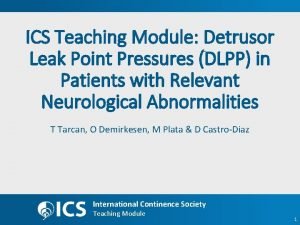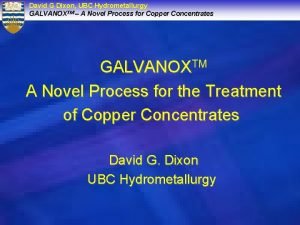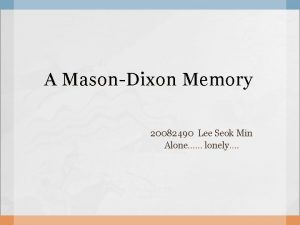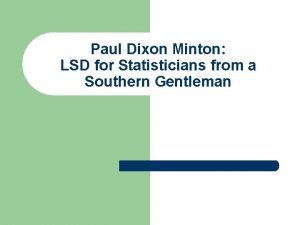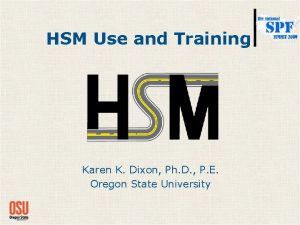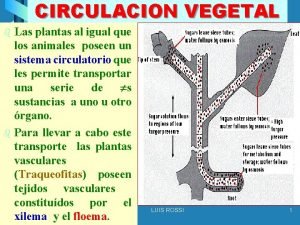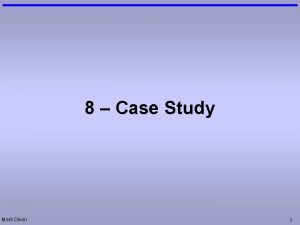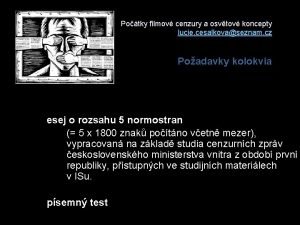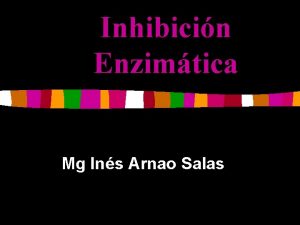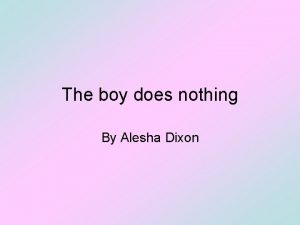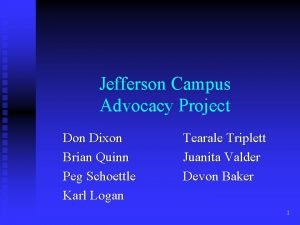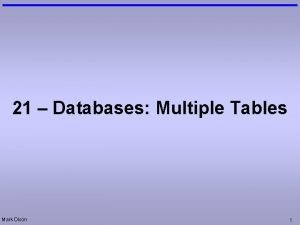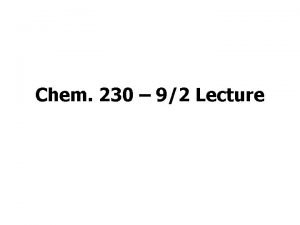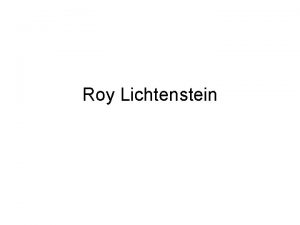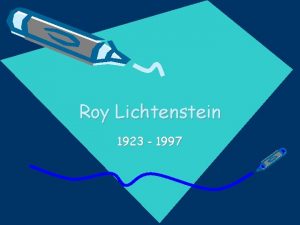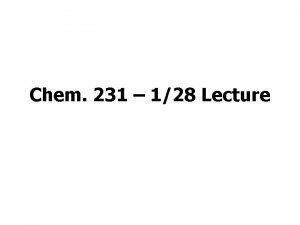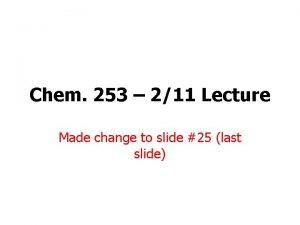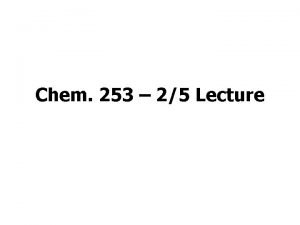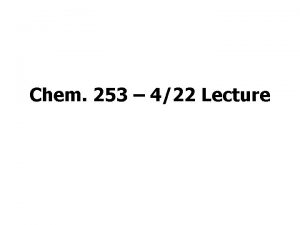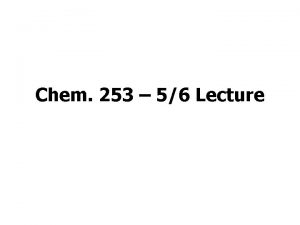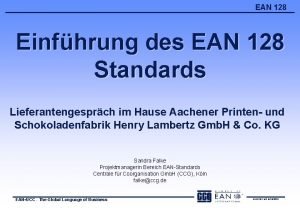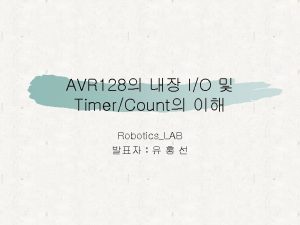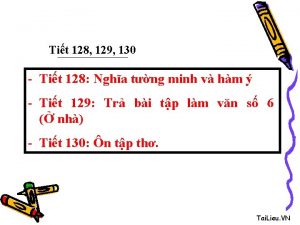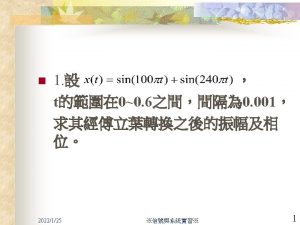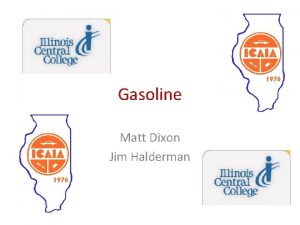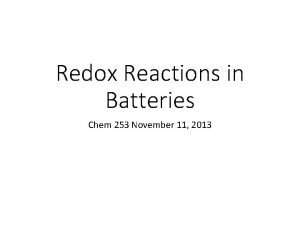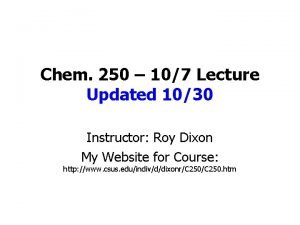Chem 253 128 Lecture Introduction Instructors Roy Dixon































- Slides: 31

Chem. 253 – 1/28 Lecture

Introduction - Instructors: Roy Dixon • Educational Background in Environmental Analytical Chemistry • My research in environmental chemistry has been in the following areas: • Cloud and Precipitation Chemistry • Measurement of constituents of cloud droplets, rain and snow • Effects of snow formation type on chemical composition • Aerosol Composition and Tracer Measurement • Bio- and Synthetic Fuel Testing

Introduction • • Undergrad at UC-San Diego (B. S. , Environmental Chemistry) Ph. D. in Analytical Chemistry at University of Washington – Thesis: Quantification of low level organic tracer of diesel exhaust in atmospheric particulate by HPLC-MS/MS • Postdoc 1: University of Wisconsin – Projects: Source apportionment of atmospheric particulate in Asia, Europe, HPLC-ICP-MS for chlorinated Pt species • Postdoc 2: UW-Tacoma/Center for Urban Waters – Projects: HPLC-MS/MS for pharmaceuticals+personal care products in water as tracers of water quality, also PAHs in air • At Sac State, continue quantifying water quality tracers, moving into agricultural runoff and stormwater tracers

Introduction - Students • Introduce yourself (name/degree plan) • Is there anything specific you expect to get out of the class?

Syllabus – Instructors • I will be teaching the first third (atmospheric chemistry) and last third (various topics) and Dr. Miller-Schulze will be covering the middle third (water chemistry and various compound classes) • I will maintain a website through my individual website/Dr. Miller-Schulze will use Blackboard

Syllabus – Meeting/Exams • In graduate classes, I will typically have a 10 minute break in the middle of the lecture (with class ending at 8: 10 instead) • This may be skipped due to class assignment in middle of class period • Exams: 3 exams (one on each third – no cumulative exam; exam 3 is on day of final but will be as long as exams 1 and 2) • Exams will involve qualitative and quantitative knowledge

Syllabus – Text/Exams/Reading • Because of the single 2. 5 block of time, we will try to have group activities in the middle of the lecture • Exams: 3 exams (one 1 hour on each third – no cumulative exam; exam 3 is on day of final) • Exams will involve qualitative and quantitative knowledge • Most of the information will come from the Baird and Cann text (with some supplementary readings made available)

Syllabus - Course Overview • The course is partially broken up by “spheres” – – – Atmosphere Hydrosphere Lithosphere Others: Biosphere We study chemistry in each regime • Environmental Chemists can also study: – Natural (unperturbed) Systems – Cause and Effect of Perturbations (e. g. pollution) – Ways to Mitigate or Adapt to Perturbation

Syllabus - Notes on Grading I • Exams: 84% of total (28% each) • Homework (8% of total) – Mostly assigned from book – Some problems (e. g. review questions) are not graded – Will randomly select one or two problems for grading – must show work, not just answer

Syllabus - Notes on Grading II • In Class Group Assignments (8% of grade) - Goal is to increase in-class participation, break up a long lecture, and encourage learning by doing - Expect to have groups of 3 (could depend on class size), assigned by instructor, with different tasks assigned to each participant - Will work on problems, and then turn in results - New activity for me - Will start with an ungraded activity today

Syllabus - Notes on Grading III • Group Assignments (cont. ) • This is how the active learning exercises will work logistically: – There will be a class list available that gives the groups and roles for each worksheet – You’ll sit with your group (by number) and work on an Activity • Groups will be of 3 (and some 2’s or 4’s depending on attendance, # of students in class) – One person in the group will be “the calculator”, one person will be “the recorder”, one person will be “the manager”

Syllabus - Notes on Grading IV • Group Assignments (cont. ) • Role Descriptions: – Calculator (C): This is the person who operates the calculator and performs all calculations – Recorder (R): This is the only person who can write answers on the worksheet to be turned in at the end – Manager (M): This is the person who manages the group. This is the only person who can ask me questions during the “active learning” time

Typical Lectures (My part) • Mostly by powerpoint (with some example calculations) • Announcements in beginning • Powerpoint slides will be made available on website • Group activities will be in the middle (~30 min) • No break planned, but I could have a break before or following the group activity

Homework Set 1 • To do before 1 st Exam. • Working on entire set, but • Set 1. 1: Ch. 1 • • Problems: 2, 4, 5 Review Questions: 1, 3 -10 Additional Problems: 1, 5 bold problems to be turned in next lecture • Problems to be turned in should be worked on independently.

Today’s Topics • • Biogeochemical Cycles Introduction to Atmospheric Chemistry The Stratospheric Chemistry

Biogeochemical Cycles • Mostly not covered in text • What is a Biogeochemical Cycle? – If we can define different regions as “spheres”, we can define biogeochemical cycles as the set of spheres and the flow paths in and between different spheres • Why am I covering them? – They are very useful for putting problems in perspective – Examples: • anthropogenic vs. natural sources • reservoir vs. flux species

Biogeochemical Cycles • Familiar Example (that is in text) Water Cycle – a largely non-chemical transformation cycle Green Numbers are Amounts (Reservoirs) Black Numbers are Fluxes (transport from one to another reservoir) Baird and Cann, p. 410

Biogeochemical Cycles • Can also use box and arrow approach • “Box models” are among the simplest models describing cycling atmosphere Ice oceans Note: atmosphere is nearly insignificant as reservoir, but very important for fluxes

Biogeochemical Cycles • Another Example: Sulfur Cycle Pollution (e. g. burning S-containing coal) significantly affects continental atmosphere Although Sulfate is a major constituent of sea water, marine biota emissions ((CH 3)2 S) is a significant source of atmospheric S Butcher et al. , Global Biogeochemical Cycles

Biogeochemical Cycles • Carbon Cycle – small fluxes (Fossil Fuel C) can put reservoirs out of balance due to “quick cycling” (in surface ocean and biota) Butcher et al. , Global Biogeochemical Cycles

Biogeochemical Cycles • Cycles covered are very general and don’t cover a variety of pathways within boxes • Additionally most spheres or boxes need to be subdivided due to differences in pathways Butcher et al. , Global Biogeochemical Cycles

Biogeochemical Cycles • Simple Modeling Math – For a reservoir (mass M) with one source (Q) and one sink (S), at steady state: Reservoir d. M/dt = Q - S S (flux out) – turnover time = t = M/S (how long it would take the reservoir to empty if the Q =0) Q (source) – A common sink is proportional to concentration (or reservoir mass, M): S = k. M and t = M/S = 1/k – With S proportional to M, exponential decay is expected and t is also the “e-folding time”

Introduction to Atmospheric Chemistry • Atmospheric Composition – 78% nitrogen (N 2) – pretty inert – 21% oxygen (O 2) – fairly inert in lower atmosphere – ~1% Ar • Concentration units (for non-major species) – parts per million by volume (ppmv) = (n. X/nair)· 106 (where n = moles) – partial pressures (atm, e. g. for Henry’s law calculations) – concentrations (molecules/cm 3 for kinetic calculations) – A well mixed gas (e. g. Ar) will have constant mixing ratio with altitude but a decreasing concentration

Introduction to Atmospheric Chemistry • Source of Oxygen – Not a stable gas (metals, carbon like to be oxidized) – Produced by biota (and then changed the atmosphere) • Structure of Atmosphere – Pressure decreases with height (as with other fluids) – If the atmosphere is considered isothermal (it isn’t), P = Poe-Z/H (where P = pressure, Po = 1 atm, Z = height, and H ~ 8 km)

Introduction to Atmospheric Chemistry • Structure of Atmosphere – cont. – The main gases are invisible to the light reaching the lower atmosphere – Little direct solar heating occurs in the lower atmosphere – Surface heating from sunlight creates less dense air (n/V = P/RT), which rises and cools adiabatically – This results in a general decrease in T with increase in Z (height above sea level). Z (km) T (°C)

Introduction to Atmospheric Chemistry • Structure of Atmosphere – cont. – Exceptions to profile • near ground at night (radiation cools surface faster than surrounding air – why we can have frost at T > 0°C) • In stratosphere (to be explained in more detail) Z (km) T (°C)

Introduction to Atmospheric Chemistry • Atmospheric Layers – highest layers (not covered here) – stratosphere (~12 to 48 km) – troposphere (0 to ~12 km) • Stratosphere occurs due to change in lapse rate due to atmospheric heating from absorption of solar light • Warmer stratosphere makes mixing with lower atmosphere very slow (hard to get cold tropospheric air to rise into warmer stratosphere)

Stratospheric Chemistry short UV • The sun emits a full range of light • Short UV light is absorbed by nearly all gases • O 2 absorbs light under ~220 nm • This generates heat (and the reversing of the lapse rate) • some absorption results in photolysis: O 2 + hn → 2 O Z (km) visible light

Stratospheric Chemistry • Prediction of efficacy of light for photolyzing bonds: – can compare Ephoton with Ebond – when Ephoton > Ebond, photolysis is possible – Ephoton = hc/l (note: calculated per molecule while E is given per mole)

Stratospheric Chemistry • Ozone Formation Reaction: O + O 2 + M → O 3 + M - M is needed to remove excess energy (can write in more detail as: O + O 2 → O 3* and O 3* + M → O 3 + M + heat, where O 3* refers to an excited state of O 3) • Ozone is generated where O can form (also is generated through separate tropospheric chemistry reactions)

Stratospheric Chemistry • Value of Ozone in the Stratosphere – Ozone has weaker bonds than O 2 and absorbs longer wavelength UV light – Absorbs light effectively in the 220 to 290 nm range – This protects life in the lower atmosphere • Full Set of O only reactions O 3 + hn → O 2* + O* and O 3 + O → 2 O 2 (odd O ending rxn)
 Chem 253
Chem 253 Cone of experience
Cone of experience 01:640:244 lecture notes - lecture 15: plat, idah, farad
01:640:244 lecture notes - lecture 15: plat, idah, farad National archives gb rail 253/516
National archives gb rail 253/516 Ap78a
Ap78a Csc 253
Csc 253 Multimedia becomes interactive multimedia when
Multimedia becomes interactive multimedia when Kibd-253
Kibd-253 Ics 253
Ics 253 Biconditional
Biconditional En 253
En 253 253 meaning in the bible
253 meaning in the bible Detrusor leak point pressure
Detrusor leak point pressure Educational diagnostician (253) exam
Educational diagnostician (253) exam Psych 253
Psych 253 Spreidingsbreedte
Spreidingsbreedte George washington dixon
George washington dixon Gda academy
Gda academy Dixon montessori charter school
Dixon montessori charter school David dixon ubc
David dixon ubc Mason dixon memory
Mason dixon memory Paul dixon smu
Paul dixon smu Karen k dixon
Karen k dixon Circulacion del reino vegetal
Circulacion del reino vegetal Dixon case study
Dixon case study Thomas dixon the clansman
Thomas dixon the clansman Mg ins
Mg ins Man with two left feet song
Man with two left feet song Dixon campus jefferson
Dixon campus jefferson Jennifer dixon accident
Jennifer dixon accident Dixon swivel joints
Dixon swivel joints Mark dixon artist
Mark dixon artist
